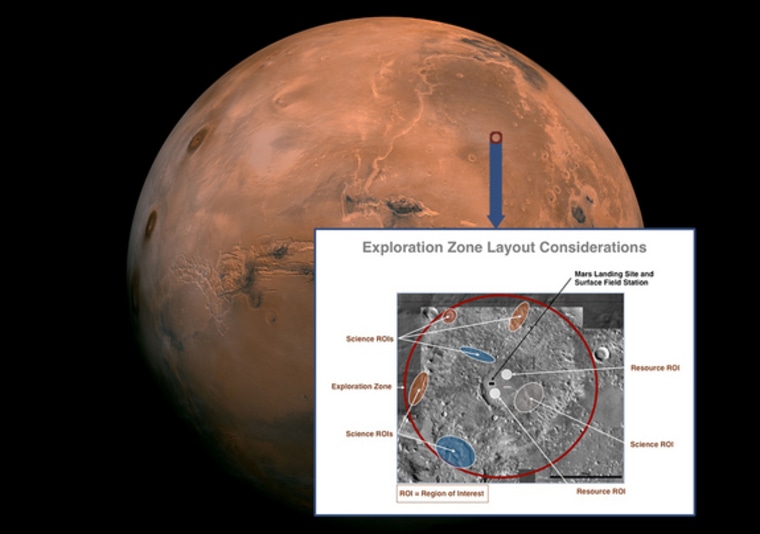NASA has already begun trying to figure out where its first Mars astronauts should touch down, about two decades before the pioneers are scheduled to launch toward the Red Planet.
The space agency will hold a workshop in Houston this October to kick off serious discussions about possible landing sites for NASA's first manned Mars mission, which the agency aims to launch by the mid- to late 2030s.
At the four-day meeting, researchers will propose roughly 62-mile-wide (100 kilometers) "exploration zones" that they believe would be scientifically interesting and possess enough resources, such as subsurface water ice, to support human explorers.

"This is going to be a hot debate," Jim Green, head of NASA's Planetary Science Division, told reporters during a teleconference Thursday (June 25). The October meeting, he added, "will start exactly the conversation we need to be able to architect what a station on Mars would look like, and how [it] would operate."
Over the next few years, NASA plans to study the most promising exploration zones in depth using the agency's Mars Odyssey spacecraft and Mars Reconnaissance Orbiter (MRO), which began circling the Red Planet in 2001 and 2006, respectively.
Related: Blue Auroras on Red Planet? Mars Astronauts May Be Able to See Them
The two venerable orbiters won't last forever, so it's important to get the ball rolling on the site-selection process now, Green said.
"Humans are going to need high-resolution [imagery] over their whole exploration zone," Green said, noting that MRO has captured high-res images of just 3 percent of the Martian surface to date. "Therefore, we need to know where they're going. It's really that simple."
This is a condensed version of a report from Space.com. Read the full report. Follow Mike Wall on Twitter @michaeldwall and Google+. Follow Space.com@Spacedotcom, Facebook or Google+.